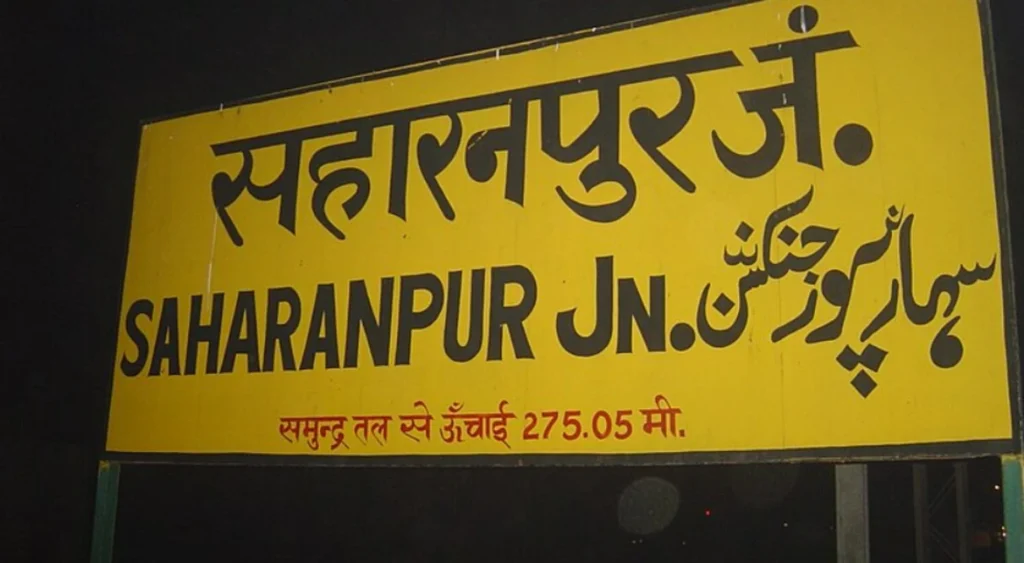Discover Saharanpur, Uttar Pradesh – a land of exquisite woodcraft, rich heritage, and lush greenery. Explore its art, culture, history, and natural beauty!

Explore Saharanpur Where Art Culture & Nature Thrive
Nestled in the northern region of the Indian state of Uttar Pradesh, Saharanpurr District boasts a rich cultural and historical heritage that has left an indelible mark on the tapestry of India. With its diverse populace, vibrant traditions, and historical landmarks, Saharanpur is a microcosm of the region’s multifaceted identity.
The district’s history dates back centuries, as evidenced by the remnants of ancient civilizations discovered in archaeological digs. Traces of the Indus Valley Civilization and Mauryan era have been unearthed, providing a glimpse into the region’s past. Over time, Saharanpur evolved into an important center for trade and commerce due to its strategic location on the trade routes connecting the Gangetic plains to the Himalayan foothills.
Cultural diversity is a hallmark of Saharanpur, with various communities coexisting harmoniously. The district is a melting pot of different languages, religions, and traditions. Hinduism, Islam, and Sikhism have deep roots here, contributing to a vibrant religious mosaic. Festivals like Diwali, Eid, and Baisakhi are celebrated with enthusiasm, transcending religious boundaries and fostering unity.
The arts and crafts of Saharanpur are renowned both regionally and nationally. The district’s woodcarving industry, which dates back to the Mughal era, is particularly famous. Skilled artisans create intricate wooden furniture, decorative items, and artifacts that are sought after across the country. The tradition of woodcraft has not only sustained livelihoods but also become an emblem of the district’s craftsmanship.
Saharanpur’s natural beauty is another jewel in its crown. The district is blessed with a diverse landscape, encompassing fertile plains, lush forests, and picturesque hills. The Yamuna River, one of India’s major rivers, flows through the district, providing irrigation for agriculture and a source of life for the communities residing along its banks. The Shivalik Hills offer a scenic backdrop and also contribute to the region’s biodiversity.
Historical landmarks pepper the district, reflecting its storied past. The Saharanpur Fort, an 18th-century architectural marvel, stands as a testament to the region’s strategic significance during the Mughal era. The Clock Tower, a symbol of colonial influence, is another iconic structure that adorns the district’s landscape.
As Saharanpur embraces modernity, it grapples with the challenges of urbanization and development. Efforts are being made to balance progress with the preservation of its cultural heritage and environment. The district administration and local communities are collaborating to ensure that the legacy of Saharanpur’s past continues to thrive amidst the demands of the present.
Famous Places in Saharanpur District
Saharanpur District boasts a collection of famous places that showcase its historical, cultural, and natural wonders. From architectural marvels to serene landscapes, here are some notable attractions:
Saharanpur Fort: A relic of the Mughal era, Saharanpur Fort stands as a symbol of the district’s historical significance. Its imposing architecture and strategic location highlight its role in the region’s past.
Shakumbhari Devi Temple: This ancient temple dedicated to Goddess Durga draws pilgrims and tourists alike. Situated on a hill, it offers panoramic views of the surrounding landscape and a spiritual atmosphere.
Clock Tower: A colonial-era landmark, the Clock Tower is an iconic structure that marks Saharanpur’s transition into modernity. Its distinctive architecture and central location make it a prominent feature of the district.
Sarsawa Air Force Station: An important military installation, this air force station contributes to the region’s security. It also hosts an annual air show that attracts aviation enthusiasts.
Ghuggha Veer Memorial: This memorial commemorates the sacrifice of Veer Ghuggha, a local hero who fought valiantly against British forces. The site pays tribute to his courage and patriotism.
Saharanpur Botanical Garden: Nature enthusiasts will appreciate this serene oasis. The garden is home to a diverse range of flora and offers a peaceful retreat from the hustle and bustle of urban life.
Bada Gaon: This village is renowned for its intricate woodcraft, reflecting Saharanpur’s artistic heritage. Visitors can witness skilled artisans crafting exquisite wooden artifacts and furniture.
Yamuna Nagar Dam: Although technically in the adjacent Yamuna Nagar district, the Hathni Kund Barrage Dam on the Yamuna River is an engineering marvel that provides irrigation and water resources to both districts.
Deoband: Known as a center of Islamic scholarship, Deoband is home to Darul Uloom Deoband, a prominent Islamic seminary. The institution’s historical and educational significance draws scholars and students from around the world.
Shivalik Fossil Park: Located in Saketri village, this park is a treasure trove for paleontology enthusiasts. Fossils and remains of prehistoric animals provide a glimpse into the ancient history of the region.
Jama Masjid Saharanpur: An elegant example of Indo-Islamic architecture, this mosque is a place of worship as well as a cultural landmark. Its intricate designs and historical significance make it a must-visit.
These are just a few of the famous places that Saharanpur District has to offer. Whether you’re interested in history, spirituality, architecture, or natural beauty, the district’s attractions provide a diverse range of experiences for visitors to explore and enjoy.
Read More :-
